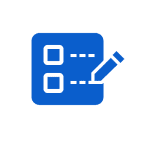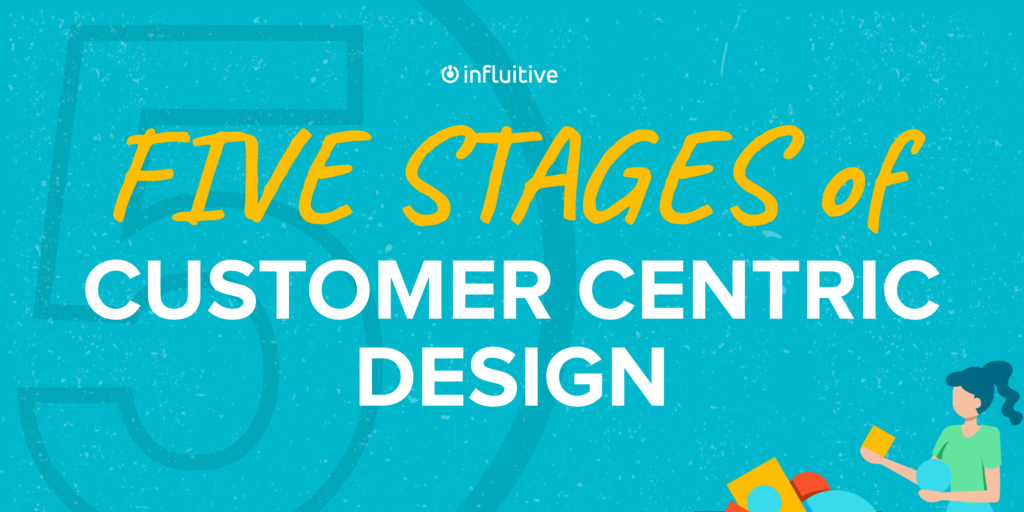Great user experience hinges on your ability to understand how consumers think. It’s all well and good if your product feels intuitive to you, but if your customers don’t feel the same way, they won’t continue using your platform.
Involving your user base directly into your design processes is necessary to ensure your product’s user experience is as logical and pleasing to customers as possible—because it will be built around insights sourced directly from them.
We’ve been doing this for a while here at Influitive, with help from our customer advocate community, Influitive VIP. Some of our most impactful product updates came to be through detailed feedback and observations from engaged members of our customer community. Here’s how we achieve customer centric design by leveraging feedback from start to finish of the feature development life cycle.
1. Discovery and ideation
Who better qualified to inform you of your product’s limitations than your customers? In using your product day in and day out, they’re able to spot potential improvement areas that might not have come across your radar.
To help us prioritize which product improvements we should tackle first, we survey our customer advocates, asking them to evaluate specific aspects of their experience, which helps us identify common challenges across users.
A lot of development teams stop here. But, by pushing your inquiry further, you actually get a more detailed picture of customers’ thought processes that will make the end design much more effective and easier to produce.
We recently took on the project of updating the navigation taxonomy for our product’s admin view. The old navigation had too many items and wasn’t logically ordered to be scannable. In redesigning the navigation, we wanted to take into account how customers would organize the information in a way that makes sense to them.
Here’s what the old navigation looked like
We created a discussion topic within the Influitive community, asking customers to complete an activity in which they sorted navigation items and assigned category names to them. After coming up with their groupings—which they put together using a card sorting tool called Optimal Sort—customers were directed to share screenshots of their framework in the discussion thread and explain their reasoning.
In most cases I was able to video call customers while they completed this exercise, recording their responses so that I could analyze them later. This allowed us to gain an understanding of our users’ mental models and choose naming conventions that were informed by customers’ own words—not just ours.
Customers who participated in the terminology sorting activity then shared their groupings and commentary in a discussion thread
We received great feedback through this exercise, notably that some features didn’t fit into users’ main workflow and, therefore, informing the priority of those items in the app’s information architecture.
2. Design
After collecting feedback and recommendations from users comes the task of distilling these insights into one cohesive, customer-informed prototype to take back to users to test.
Optimal Workshop was a great tool for this particular exercise, as it took the groupings of navigation items created by users and looked at which combinations had the highest concentration of agreement. The result was a schematic that looked something like this.
Although customers had different frameworks for treating the information based on how they each used the platform, most were in agreement in their combining of the terms “advocates” and “groups”, and their combining of “reports,” “program goals,” “ROI,” and “performance.
After analyzing customers’ most common associations, we came up with the new navigation structure.
Here’s what the new and improved navigation looks like
Although the framework we came up with was highly influenced by the customer submissions we received, we still used our own judgement and understanding of conventional B2B app navigation in the final selection.
Henry Ford is famously attributed with the quote: “If I had asked people what they wanted, they would have said faster horses.” In some ways, he’s right—if you know of a better way to meet users’ needs that contrasts their expectations, it’s in their best interest for you to provide it to them. That is, as long as you get to the root of what their core problem is—in Ford’s case getting commuters from Point A to Point B.
Great design addresses customers’ pain points and provides a solution that can be packaged in novel ways—while remaining intuitive.
3. Testing
To determine how well a design addresses those pain points and how logical the flow of the experience is, it’s critical to include prototype testing in the design process.
After coming up with the design for our new navigation structure, we wanted to test it with customers. So, we created a new discussion post within Influitive VIP and tagged anyone who had participated in the initial ideation phase to be sure they would see our update.
We had customers engage with an interactive prototype built with Maze, a usability testing tool. Customers were directed to complete specific prompts and then share any first impressions and challenges encountered with the new navigation.
A look at the activity we had customers complete to get them to engage with our interactive prototype
Customers were quick to provide detailed feedback on what they enjoyed about the new navigation, and what they felt could be further improved. Much of users’ commentary was on how intuitive the newly streamlined design appeared to them. In taking the time to study our customers’ thought processes, we were able to provide them with the best possible experience to accommodate their workflow.
4. Communicating product releases and updates
Building trust is an important component of fostering good relationships with customers. One way to maintain your customers’ continuous trust in you is to avoid blindsiding them when making critical updates to your product. That’s why you should have a consistent flow of communications going out to your users for any product updates or feature releases.
We make use of our online community to communicate these changes to customers and have a dedicated discussion channel for product news and feedback. Once the new navigation structure had officially rolled out to all customers, we made sure to create a dedicated topic around it.
One of the methods by which we communicate product changes to our customers is through discussion threads within our customer advocate community
This notified customers who had participated in the ideation and testing processes that their contributions had now been realized within the product and allowed anyone who had not been involved in the development of the new navigation to understand the implications of the changes.
5. Continuous iteration
Once a design has been released, the process doesn’t end there. You should always be looking to improve customers’ experience of your product through the continuous collection of feedback. That’s where having a means for easily surveying customers and collecting hand-raisers for design exercises can be a saving grace for product design teams.
Having a ready supply of customers who are willing and excited to talk to you without expecting incentives is really powerful. It’s a privilege as a designer to be able to inform your work with real-time feedback. In getting to know our customers on a more personal level, it has also become easier for me to make empathetic design choices, because I’m making things for real people.
The notion of customer centric design might seem like a novel idea for some, but it’s inherently understood by product designers that focusing first and foremost on the user is the key to building successful products.
The benefits of involving customers in the design process
Customer centric design means:
- Giving customers a voice that is heard
- Building excitement around features and decreasing the chance that you surprise users when they are released
- A resulting user experience that feels intuitive
- Ensuring customers’ needs are not just met, but understood, reflected on, and then designed around












































